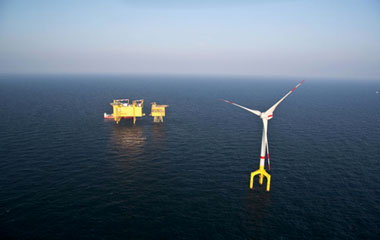In the first half of the year, the amount of wind energy transmitted from the North Sea onshore by transmission system operator TenneT has risen to 11.51 TWh.
This corresponds to an increase of 21% compared to the first half of 2019 (9.51 TWh). Power transmission from the North Sea accounts for 15.6% of the total wind power generation in Germany, which reached 73.7 TWh in the first half of the year.
“The expansion and integration of offshore wind energy is of central importance for the European energy transition. With Borssele alpha and – from mid-August – Borssele beta, we have now also successfully completed the first two offshore connections in the Dutch North Sea,” says Tim Meyerjürgens, COO of TenneT.
“We are making consistent progress in the key areas of innovation, standardization and cost-efficiency. Ever since TenneT set the standard for plastic-insulated direct current cables at 320 kV in the offshore sector around 10 years ago, we have been defining a new global benchmark for the future with our 525 kV direct current subsea cable system and its transmission capacity of 2 GW,” he adds.
This development program is aimed at creating a standardized cable system that TenneT will be able to use in the five projects BalWin1, BalWin2, BalWin3 (German North Sea) and IJmuiden Ver alpha and beta (Dutch North Sea) by 2030, as well as in future projects with the same power and voltage. This will reduce costs, increase the security of supply and minimize the environmental impact.
TenneT currently has 14 offshore grid connections in operation, two of them in the Dutch North Sea (including Borssele beta) and 12 in the German North Sea. At 7,132 MW in the German North Sea alone, TenneT’s connection capacity already exceeds the federal government’s target for this year – 6.5 GW total in the North and Baltic Seas.
In the Dutch North Sea, TenneT is set to achieve 1,400 MW of connection capacity by mid-August. By 2030, TenneT’s offshore grid connection capacity will increase to around 17 GW in Germany and 9.6 GW in the Netherlands.
In June, TenneT also made proposals to the EU and the Dutch and German governments to create an integrated energy system approach to the international development of offshore wind energy, including bespoke technology and regulations to facilitate the use of hybrid projects.




